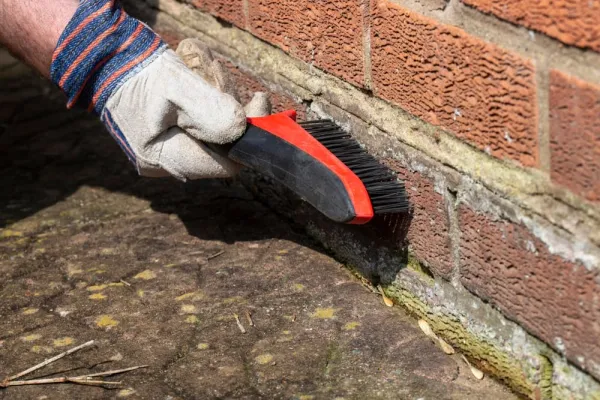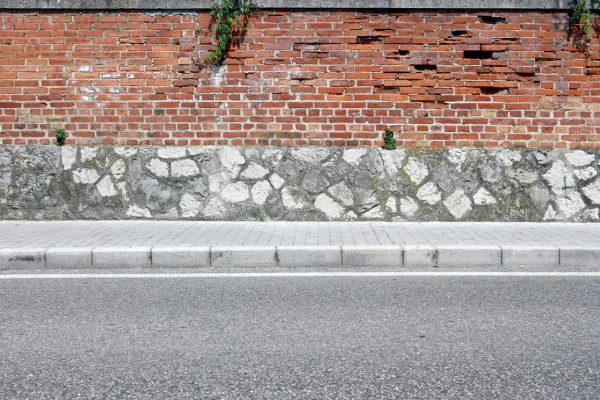There are about 30 species of woodlice native to the UK.
They play an essential role in the ecosystem by decomposing dead plant matter.
However, if you’ve found woodlice in your home, you may be wondering: Are woodlice in the house a problem?
We’ve explained everything you need to know below.
What are woodlice?
A woodlouse (the singular form of woodlice) is a terrestrial isopod (a type of crustacean) found worldwide.
In the UK, most species of woodlice are grey and have seven pairs of legs (totalling 14).
They are small, ranging from 2.5 millimetres in length to 18 millimetres.
Where do you find woodlice?
You often find woodlice:
- In walls
- Underneath stones or other objects
- In compost heaps
- In rotting wood (hence their name).
This is because sunlight rarely gets to these places, and they tend to be damp and cold for much of the year. Woodlice also feed on decomposing plant material.
Seasonal change in location
As winter approaches, woodlice seek a frost-proof hiding place to hibernate. They mostly live in damp places and are thus commonly found in gardens.
They have also been known to come inside during the year’s colder months. This is particularly common with the garden woodlouse.
How common are woodlice in the UK?
Some woodlouse species in the UK are grey, while others are brown.
The common rough woodlouse is found in almost all parts of the United Kingdom. They tend to come out at night when they are searching for food.
How to spot woodlice in the house
However, these animals are very small, so they can be difficult to spot.
You are most likely to find them in the dark places of your house. This often includes:
- Loft
- Basement
- Underneath furniture
- Crawl spaces
- In between bricks in the wall.
Woodlice can also damage your furniture and wooden surfaces. This usually appears as small, oval or round holes. You might even spot crumbling wood.
Woodlice get rid of their skeletons as they grow. So, if you find discarded exoskeletons in damp areas, this is a clear sign.
Another way to spot woodlice in large quantities is if you find small black or brown pellet-like waste. Piles of this substance (known as ‘frass’) might be in damp or dark places.
What causes woodlice in the house?
Woodlice are attracted to damp, cold and dark places. Before winter begins, they are often known to go inside properties.
If you have faulty foundations or badly-positioned brickwork, this might contribute to the presence of woodlice.
Woodlice could also be a sign that your house is damp.
Are woodlice in the house a problem?
In most cases, woodlice are harmless. They are not known to transmit disease or to hurt humans. But they can disrupt your house in other ways.
Woodlice can damage your furniture. Anything wooden in the structure of your house is vulnerable to deteriorating.
If mould grows on your wallpaper, then woodlice can feed on this too, causing damage to the walls.
Woodlice are generally known to have a bad odour when gathered in a group. This is because of the gas they emit, which might also be associated with the pre-existing dampness in that area.
Woodlice may damage the plants in your house. They often bite through stems or leaves.
You might accidentally step on woodlice if you have them in your house. This can leave a stain on carpets.
How do I stop woodlice from entering my house?
Seal entry points
Sealing entry points into your house for insects is one of the first steps.
Gaps in your doors and windows are problematic and need to be fixed. (If you find these, it could indicate subsidence issues).
Some woodlice will take shelter close to the outside of your house before they finally come in.
Underneath plant pots or compost heaps are excellent examples. If you have these near your property, it’s likely to bring woodlice closer.
Keep your house dry
You should try to keep your house dry during the colder months.
One way to do this is to open the windows. Another is to increase the heating.
You can even do both—if you can afford it—by periodically having your heating on and windows opened simultaneously.
It is essential in the dampest rooms or parts of the property, such as your basement and loft.
How do I get rid of woodlice in my house?
The best way to remove woodlice is to hire a pest control expert.
They will have the necessary equipment and experience to manage the situation moving forward.
You can buy products in the store that help you to get rid of woodlice.
Many insecticides might do the job, and some products labelled ‘pest repellent’ are also great.
With some of these, you could need to spray it onto the woodlice themselves or the areas they inhabit.
But there are some solutions that involve stationing the odour in relevant parts of the house.
It might emit long-lasting spray around door thresholds or other points of entry.
How much does it cost to remove woodlice from my house?
The average pest control specialist in the UK costs £230 per day, but this can vary depending on your location in the country.
For example, professionals tend to charge more in London and less in the north-east.
Several sources indicate that woodlice removal starts at £100. But the level of service will also make a difference.
For example, if you have a significant infestation throughout a large house, you will be charged more than a minor incident in a small house. This is because more products and time will be needed.
Speak to an expert and gather several independent quotes to see how much it will cost.
Does woodlice in the house affect the property value?
Yes, woodlice can affect your property’s value. They can sometimes cause damage to the wooden foundations of your home, if applicable.
And your new owners will also be concerned about the animals entering all their belongings.
It is almost always worth sorting out the problem before selling the house. Woodlice will usually knock far more off the value than it costs to get it fixed. And you must declare the issue if it is significant.
The effect it has on your house value depends on its severity. Major infestations that previous experts have struggled to fix might cause enormous alarm for potential buyers.
But if it’s only small scale, it might knock a few thousand off the value.
















